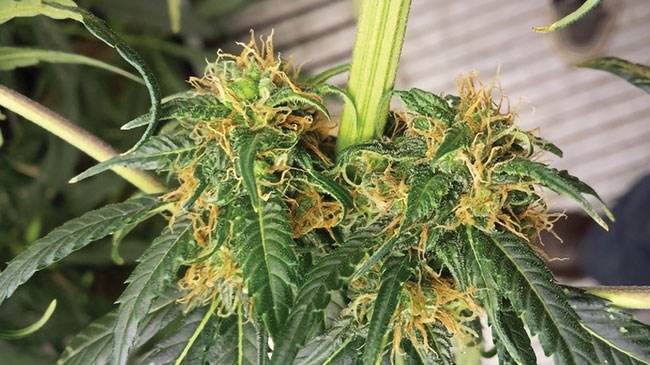
Features
Production
How to cultivate hemp for CBD
Field production of industrial hemp is getting lot of attention in Canada and the U.S., with some changes in the regulations for processing various parts of the plant.
March 12, 2019 By Mohyuddin Mirza

Oil from the seed and fiber from the stem are the two most common uses, and now the possibility of extracting cannabinoids (CBD) from flowers appears very attractive. Here are a few basic facts before you jump into cultivation for CBD extraction.
Selection of varieties for CBD
This is one of the very important aspects growers must understand. If CBD is the focus of production, be aware that there is practically no information available on CBD contents of Health Canada approved varieties.
In 2014, my colleagues at the Alberta Innovates – Technology Futures facility in Vegreville and myself completed a one-year study screening four hemp varieties for CBD content and developing best management practices. We tested four varieties and selected X-59 because of its smaller size.
Male plants were removed and all female plants were grown to maturity. In the final analysis, the CBD contents ranged from 0.36 per cent to 3.94 per cent, and THC was always below the limit of 0.3 per cent. It was also observed that at a density of five plants per square meter, average CBD was higher.
So, in order to select a variety, gather as much information as possible. Also keep in mind that some variety, like Finola, set buds earlier than many other varieties. Gather more data on production of hemp in your geographical area.
Can a density be suggested?
The most commonly asked question about hemp cultivation is: How many plants per acre, hectare, square meters? For production of seeds and fiber, the densities tested are anywhere from 100 to 300 plants per square meter. For potential CBD production, my recommendation is to go between 600 to 1,000 plants per acre in proper rows. The plants will grow fairly large and good branching will take place.
What about male and female plants?
We are interested in female plants that flower – that is where CBD is. The male plants can be sorted out and removed in the field at about six weeks of age. I have learned that the window to remove male plants is very narrow, between two and three days. This means you need labour to get it done quickly. The other alternative is to grow plants in liners, like bedding plants, and remove the plants and use transplants in the field. This requires greenhouse capacity. The growing media and fertilizers are just about the same as that of bedding plants.
In my discussions with many greenhouse bedding plant growers, it was suggested that they can grow these seedlings towards the end of the bedding plants season. Normal planting times in Canada are around the third week of May and can continue to early June. I am not sure at this time if one requires a licence from Health Canada to grow hemp seedlings in a greenhouse. You do, however, need a licence to grow hemp.
What’s the best time to harvest?
If you seeded the fields directly, then the vegetative phase is continued until end of June or early July, and it is based on varieties. The Finola does not seem to depend on longer photoperiod for flower set and can start flowering by end of June. This variety can start flowering from 25 to 30 days of seeding.
Do we know about CBD and timings?
The picture shown is from a plant about 70 days old from seeding. The flowers are turning brown and trichomes are white opaque. They are almost ready for harvesting. In a field scenario, where the flowers did not get pollinated, late-May planted crop can possibly be harvested by end of July. As mentioned earlier, the variety Finola can be harvested a few weeks earlier.
Harvesting and extraction
On smaller acreage, manual harvest is possible when density guidelines are followed, that is 600 to 1,000 plants per acre. Because it will be taller and wider, some mechanics have to be developed to access all buds. Many growers consider using the stems for fiber. For extraction, one has to depend on commercial, licensed extraction facilities which are coming up now. I am aware of people developing mobile units – which have to be certified by Health Canada for GMP and other safety aspects.
There is still a lot to learn about hemp production for CBD. Some marketers claim they have higher CBD – up to 20 per cent varieties – available as feminized seeds, but they are likely more suited for total indoor operations. For high CBD, we have to avoid seed formation and harvest at proper times.
Hemp cultivation for CBD is still a huge learning curve. There is a very nice field production manual available from Alberta, entitled Industrial Hemp Enterprise, that may be useful for those exploring the opportunities with hemp.
Dr. Mohyuddin Mirza (drmirzaconsultants@gmail.com) is an industry consultant with more than 37 years of experience in crop development, production and marketing. He specializes in the technical aspects of hydroponics and systems for plant production.
Print this page